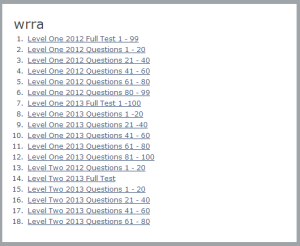 Mike Fraser
Mike Fraser
4/4/2011 WRRA Education Meeting
Kicks – Purpose
- § Players in front of a kick reduces space for the attacking team in possession (receiving team)
- § Kicking team (defenders) wish to disrupt the ball and make an attempt to contest possession
- § Referee’s job is to facilitate a fair contest by preventing the kicking team gaining an advantage
Referee Process
- Scan across the field both directions to observe what players are doing. Are they going forward or stopping and retreating?
- Know where the kicker is and if he puts players onside after the kick
- Watch for late tackles on the kicker
- Don’t watch the ball – watch the players!
- Warm players ahead that they are to stop moving forward – verbalise “stop number x”Observe any obstruction by the receiving team to protectprevent a fair contest for the ball
- Anticipate what the receiving team may do (run, kick, mark) and position yourself in an appropriate position
- Referees should run toward the direction of the kick but not toward the ball. Don’t head directly toward where the ball will land. Give yourself space to view what occurs.
- Defending players must attempt to retire if within 10m of where the ball will land or be played. You can send a warning – verbalise “10m”
- Even if the ball looks like it is going into touch from a kick, offside players are still required to stop moving forward. If the ball does not go out you can penalise them
- Penalise a player who was never onside before you penalise a player whose timing was off when chasing a kick.
AR Process
- If you are on the side of the field away from the direction of the kick or on the blind side, drop back to view the kicker (or the player who will likely kick the ball). Observe players in front of the kicker and watch for late tackles on the kicker
- Scan across the field and especially watch for wingers who may be in front of the kicker
- To assist the referee warn offside players that continue to head forward
- Can verbalise to players who are in front of the kicker as this may alert the referee that a player is offside
Hands in front of Offside Line
- If a player has their feet behind the offside line, but they have a hand or hands on the ground in front of the offside line, under the law they are still onside (see Definition for Oversteps)
- Being offside is judged in relation to where player’s feet are.
Offside Summary
- § Warn players once but if they continue to advance they should be penalised
- § Understand how players are put onside under Law 11
- § Work hard to head in the direction of the ball but move into space
- § Verbalise to offside players and 10m rule
Offside at Ruck and Maul
- Offside lines are set when ruck/maul forms
- At a tackle there are no offside lines until a ruck is formed – it is still general play
- Be firm early and set your standards for offside
- Pillars at the side of the ruck usually set the defensive line for the rest of the players, so observe where they stand
- Give yourself width to be able to view all the players
- It is sometimes appropriate to drop into the jockey position but this makes observing the offside lines a bit more trickier
AR Duties Offsides
- AR may warn players in backline if they are ahead of offside line at scrums and lineouts
- AR may warn pillars at rucks who are offside




